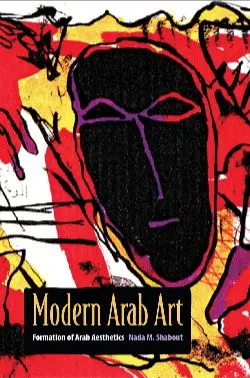
This is a super interesting book on a topic unfortunately not commonly discussed: Arab Art. We often hear the term “Islamic art,” but Shabout here argues that we shouldn’t map the two concepts onto one another.
“Islamic art,” as a concept, has long roots. Often, it is described as being made up primarily of the “decorative arts” and calligraphy, given proscriptions against figural representations. The discussion of figural art is contentious, and I tend to agree with those who argue that this was not to stop depiction mimetic depiction of the world wholesale, but as a way to prevent idolatry. After all, most pre-Islamic Arabs’ encounter with this sort of art would have been of pagan idols. This is significant, as Islamic art has never really lacked figural representation. In fact, if you spend time sifting through Islamic art, you’ll find a lot of it–largely in Persianate or Shiʿa spaces. Even so, the bulk of the Arab world did not seem to have long-standing figural traditions, although some recent scholarship has begun to push back on this view, especially in the Maghrib.
Arab art–as something separate from Islamic art–Shabout argues, was really galvanized through Arabs’ contact with Orientalists’ and through time spent in Europe. Many early Arab artists were self-trained in forms like painting, and Arab art was largely generated in response to the arts in the West in the 19th and early 20th centuries.
Interestingly, in the second third of the 20th century, Western avant-garde artists began to turn to more abstract practices, which corresponded closely with traditional Islamic arts. As part of their engagement with Western artistic movements, many Arab artists drew upon old Islamic techniques, especially calligraphy and geometric forms. Iraq, in particular, was an important place for artistic creativity, while groups like the Casablanca School in Morocco did really important work in drawing upon artisanat and other aspects of the North African past.
The most interesting material was in the second half of the book. In the first half, Shabout is dealing fairly theoretically with what “Arab art” is and what it means, but she mobilizes a series of artists–largely Iraqi–in the second half of the text, allowing for really interesting discussions of the way Arab art has developed.
I wish this book were longer. Including the introduction and conclusion, it comes in at about 150 pages. But, Shabout was also very early to the debate on “Arab art,” and I’m sure many other works have been published over the course of the past two decades (this being published in 2007, I thought while I was reading it that it was only a decade old!). The book is definitely worth reading for those interested in art history, especially in the Global South.